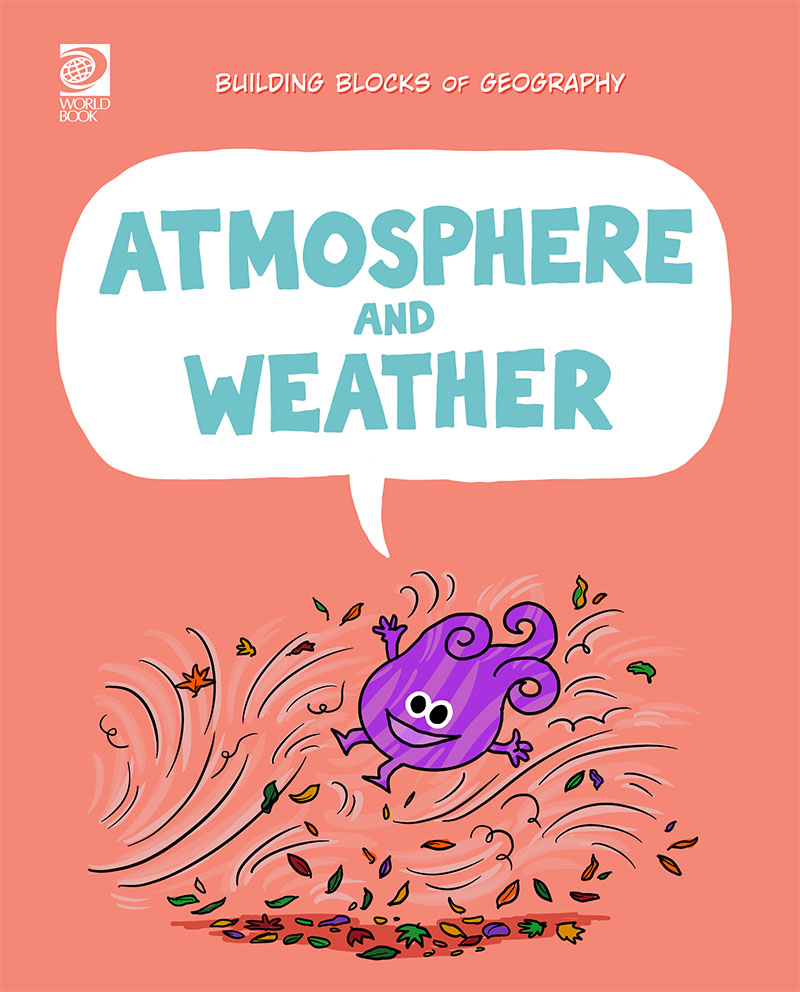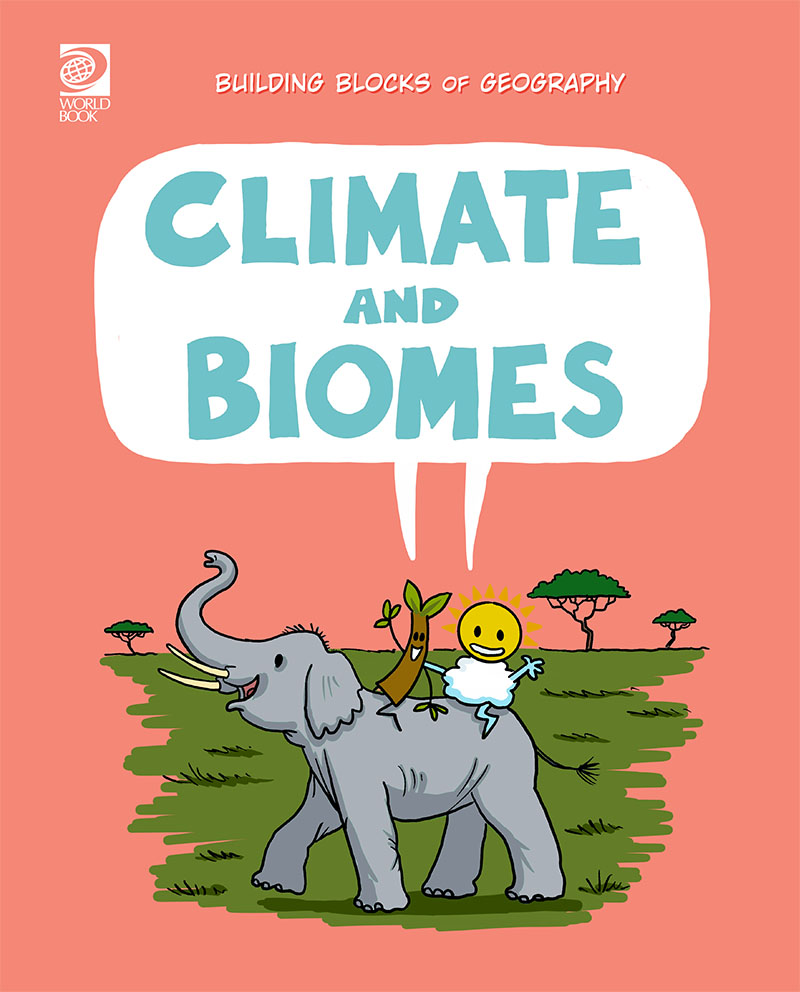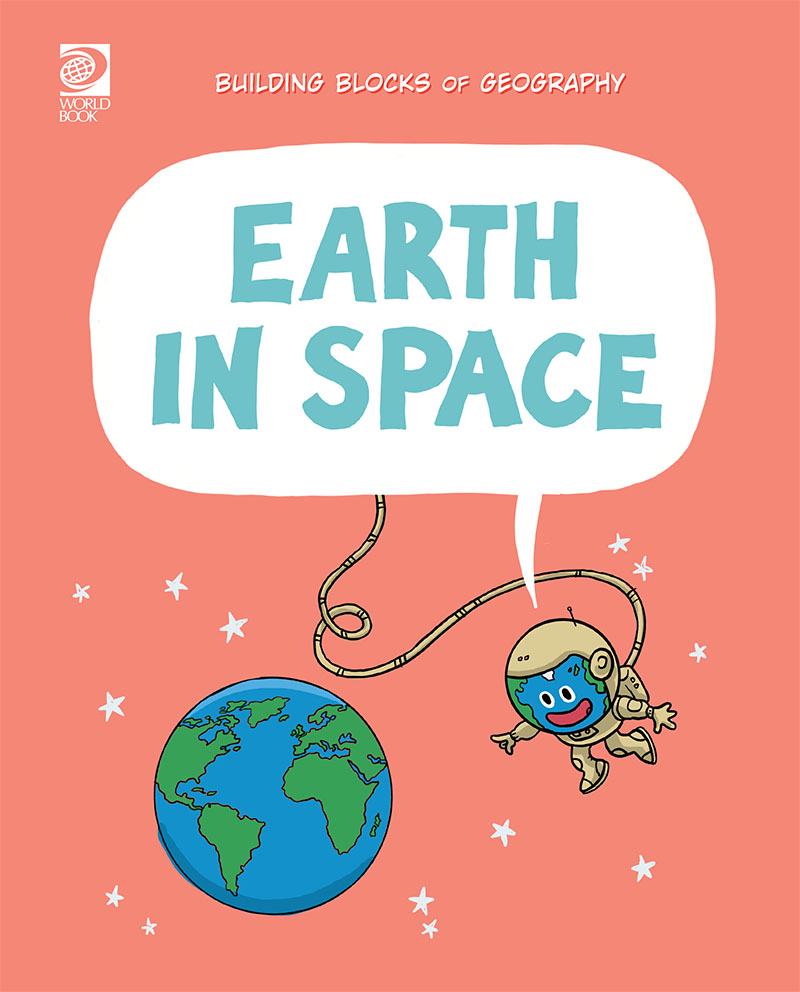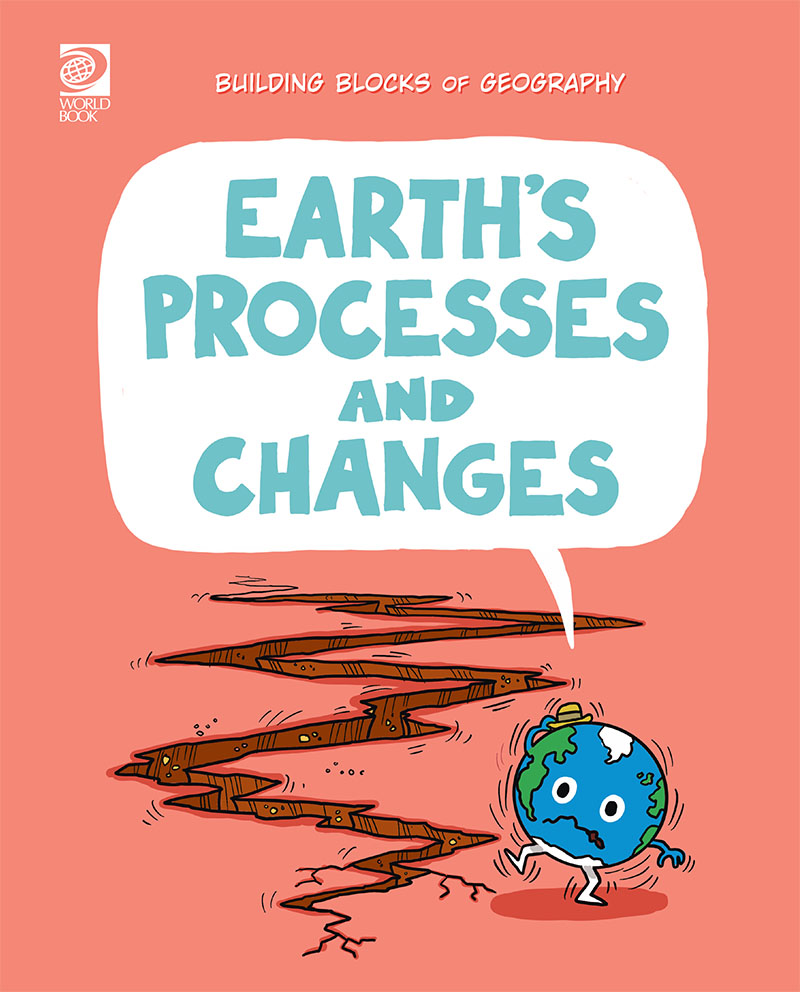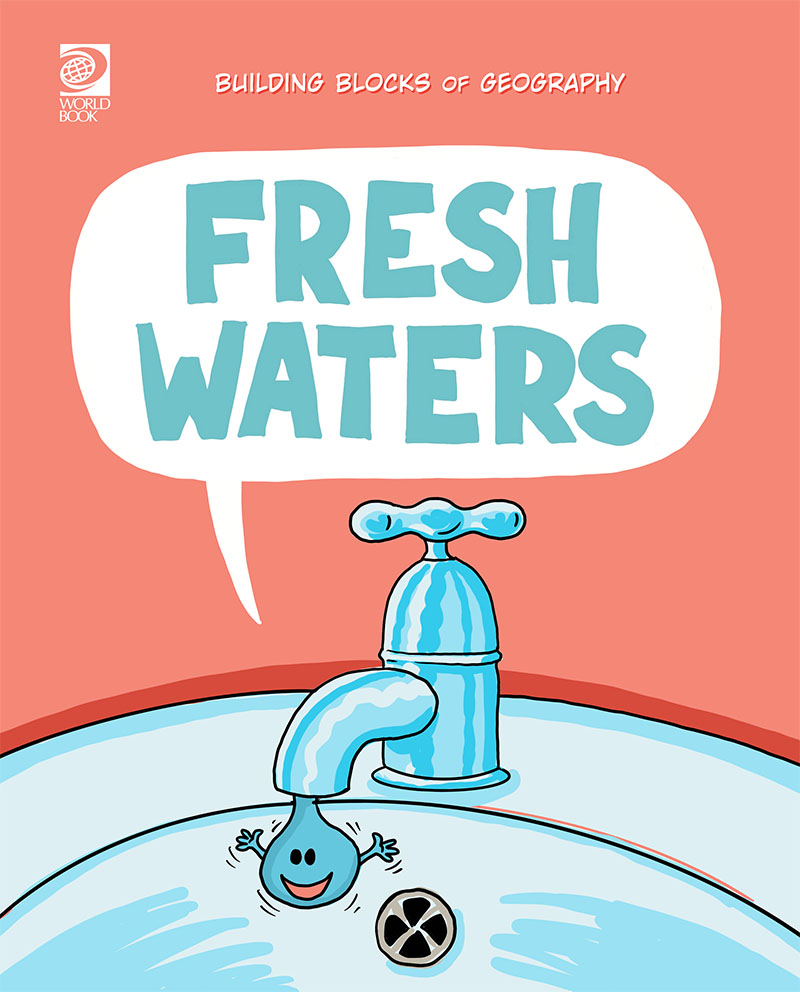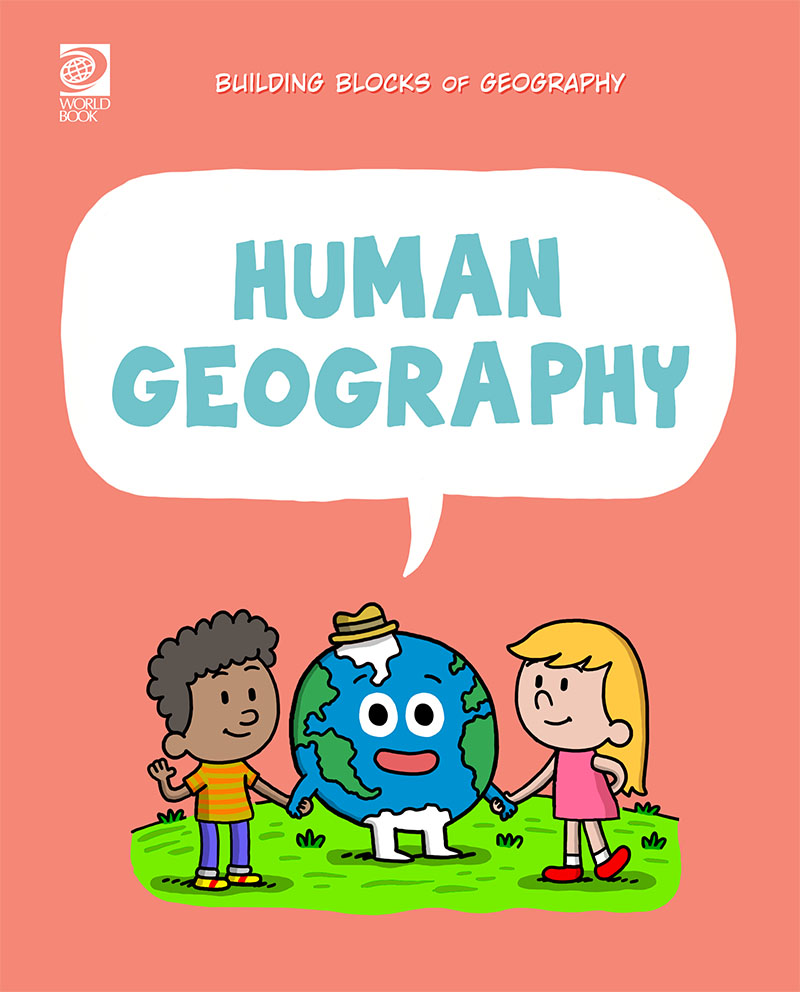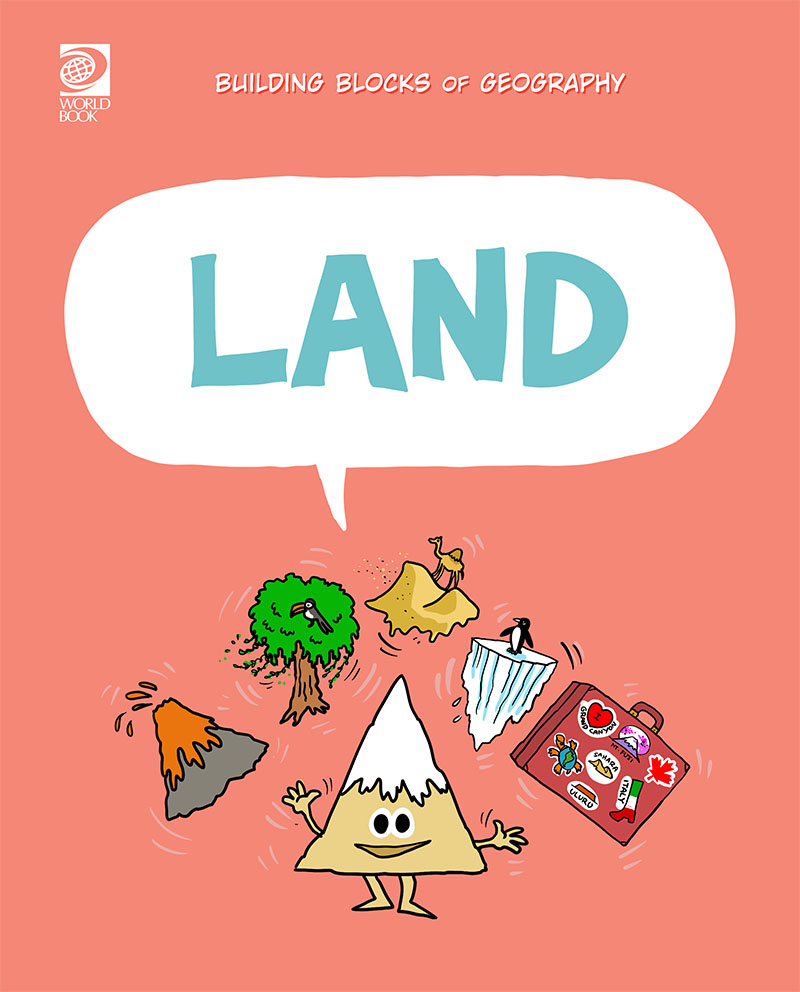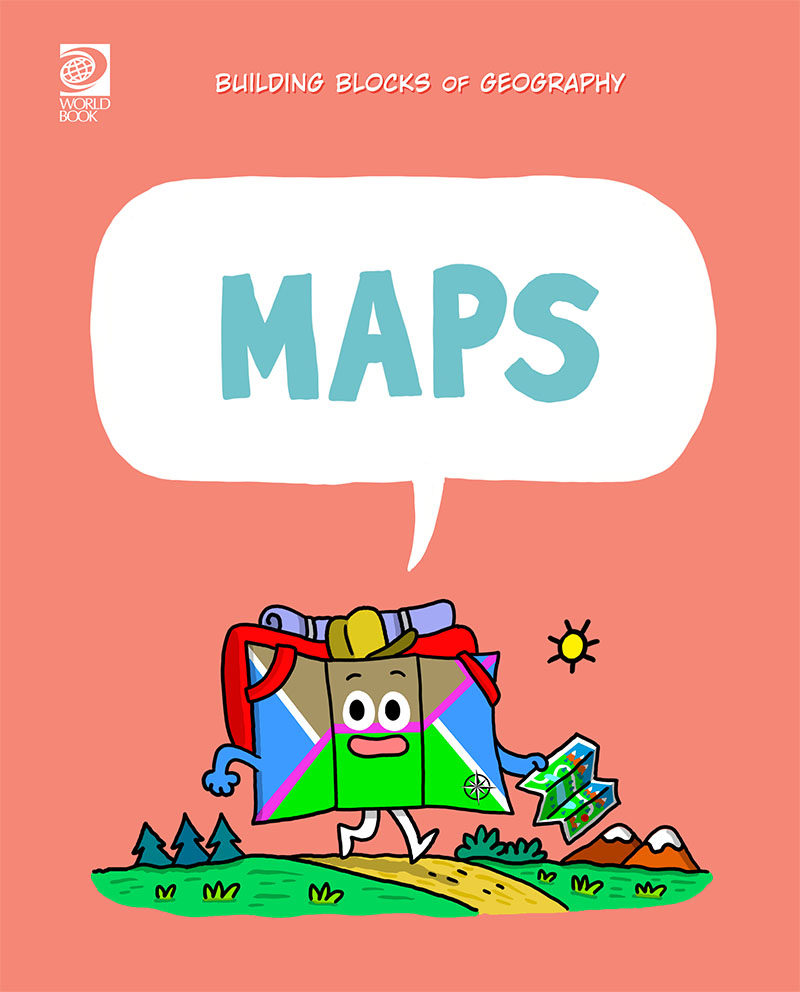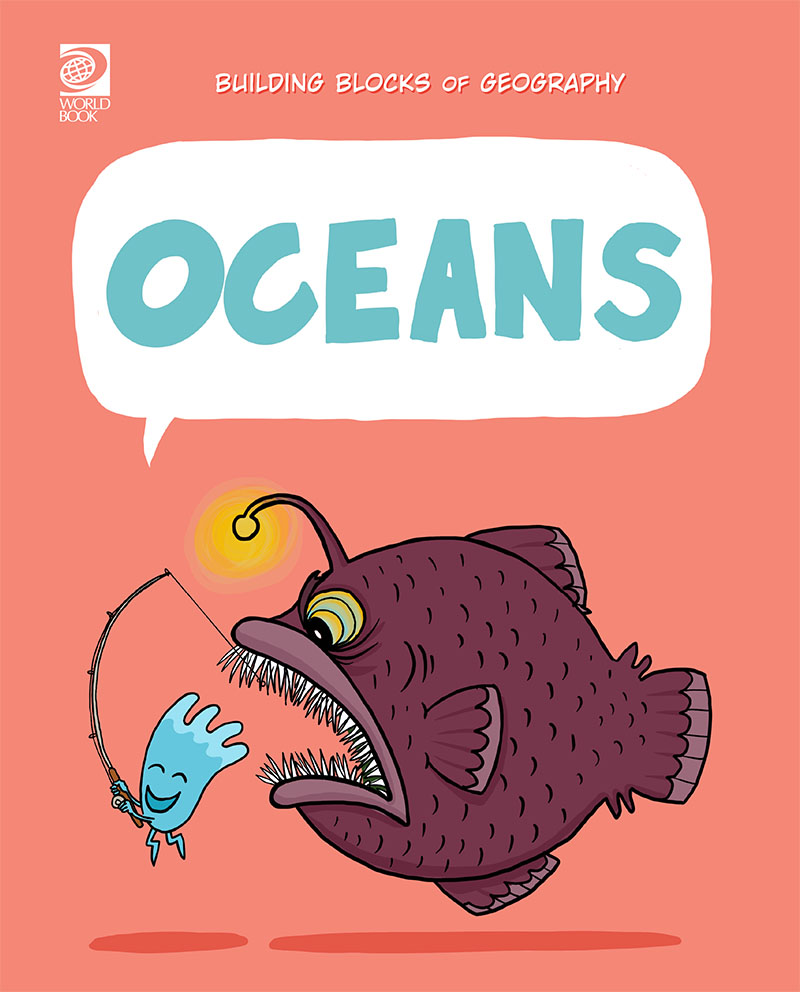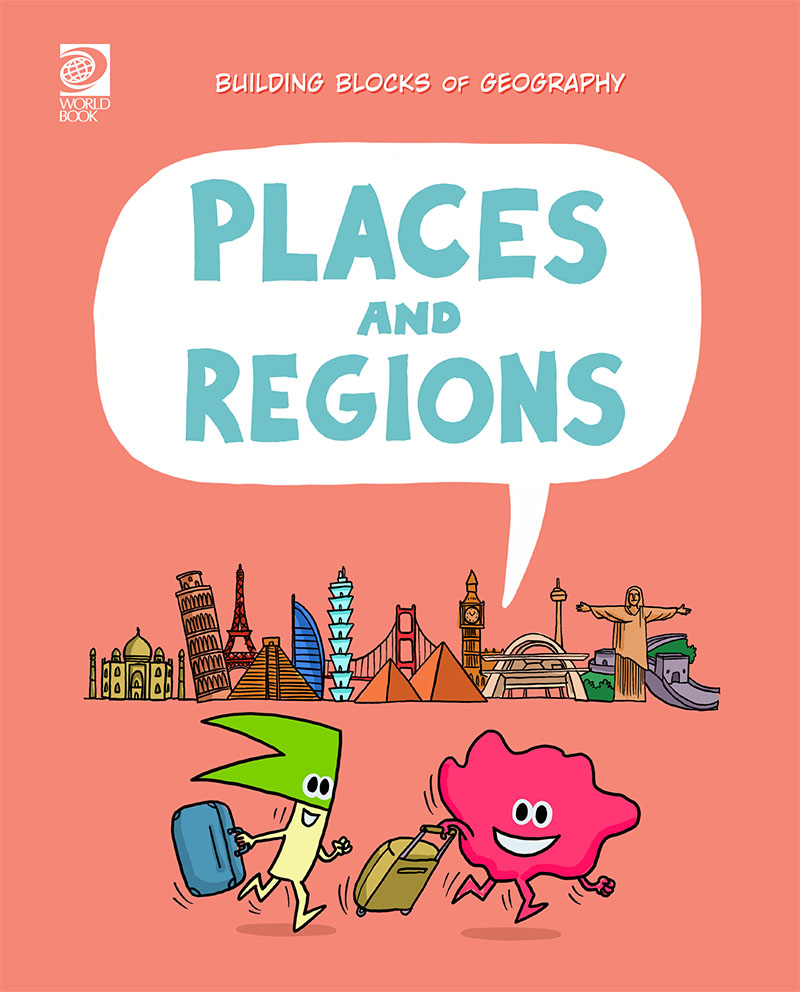Building Blocks of Geography
The Building Blocks of Geography Educator Section includes tools as well as ready-to-use classroom materials. Educators can see how the College, Career, and Civic Life (C3) Framework for Social Studies Standards and the Next Generation Science Standards align with the series, organized by the grade level(s) they teach. In addition, educators will have access to reading resources such as discussion guides and comprehension checks as well as fun classroom activities like vocabulary bingo! The Educator Section will also include engaging lessons, centered around standards, with built-in differentiation options to support all learners as they continue to explore this content.
Building Blocks of Geography Standards Alignment:
Use this section to view how the College, Career, and Civic Life (C3) Framework for Social Studies Standards and the Next Generation Science Standards align to the Building Blocks of Geography series.
C3 Framework for Social Studies State Standards
-
By the end of Grade 5, individually and with others, students will:
Discipline and Lens Performance Expectation Building Blocks Book(s) Geography Geographic Representations: Spatial Views of the World D2.Geo.1.3-5 Construct maps and other graphic representations of both familiar and unfamiliar places. Maps D2.Geo.2.3-5 Use maps, satellite images, photographs, and other representations to explain relationships between the locations of places and regions and their environmental characteristics. Maps, Land, Places and Regions, Human Geography D2.Geo.3.3-5 Use maps of different scales to describe the locations of cultural and environmental characteristics. Maps, Places and Regions Geography Human-Environment Interactions: Place, Regions, and Culture D2.Geo.4.4-5 Explain how culture influences the way people modify and adapt to their environments. Human Geography D2.Geo.5.3-5 Explain how the cultural and environmental characteristics of places change over time. Land, Oceans, Fresh Waters, Climate and Biomes, Earth’s Processes and Changes, Places and Regions, Human Geography D2.Geo.6.3-5 Describe how environmental and cultural characteristics influence population distribution in specific places or regions. Human Geography Geography Human Population: Spatial Patterns and Movements D2.Geo.7.3-5 Explain how cultural and environmental characteristics affect the distribution and movement of people, goods, and ideas. Land, Human Geography D2.Geo.8.3-5 Explain how human settlements and movements relate to the locations and use of various natural resources. Places and Regions, Human Geography Geography Global Interconnections: Changing Spatial Patterns D2.Geo.10.3-5 Explain why environmental characteristics vary among different world regions. Land, Oceans, Fresh Waters, Atmosphere and Weather, Climate and Biomes, Earth’s Processes and Changes, Places and Regions, Human Geography, Earth in Space History Causation and Argumentation D2.His.14.3-5 Explain probable causes and effects of events and developments. Human Geography D2.His.16.3-5 Use evidence to develop a claim about the past. Human Geography -
By the end of Grade 8, individually and with others, students will:
Discipline and Lens Performance Expectation Building Blocks Book(s) Geography Geographic Representations: Spatial Views of the World D2.Geo.1.6-8 Construct maps to represent and explain the spatial patterns of cultural and environmental characteristics. Maps D2.Geo.2.6-8 Use maps, satellite images, photographs, and other representations to explain relationships between the locations of places and regions and changes in their environmental characteristics. Maps, Land, Places and Regions, Human Geography D2.Geo.3.6-8 Use paper based and electronic mapping and graphing techniques to represent and analyze spatial patterns of different environmental and cultural characteristics. Maps, Places and Regions Geography Human-Environment Interactions: Place, Regions, and Culture D2.Geo.4.6-8 Explain how cultural patterns and economic decisions influence environments and the daily lives of people in both nearby and distant places. Human Geography D2.Geo.5.6-8 Analyze the combinations of cultural and environmental characteristics that make places both similar to and different from other places. Land, Oceans, Fresh Waters, Climate and Biomes, Earth’s Processes and Changes, Places and Regions, Human Geography D2.Geo.6.6-8 Explain how the physical and human characteristics of places and regions are connected to human identities and cultures. Human Geography Geography Human Population: Spatial Patterns and Movements D2.Geo.7.6-8 Explain how changes in transportation and communication technology influence the spatial connections among human settlements and affect the diffusion of ideas and cultural practices. Human Geography D2.Geo.9.6-8 Evaluate the influences of long-term human-induced environmental change on spatial patterns of conflict and cooperation. Human Geography Geography Global Interconnections: Changing Spatial Patterns D2.Geo.10.6-8Analyze the ways in which cultural and environmental characteristics vary among various regions of the world. Land, Oceans, Fresh Waters, Atmosphere and Weather, Climate and Biomes, Earth’s Processes and Changes, Places and Regions, Human Geography D2.Geo.12.6-8 Explain how global changes in population distribution patterns affect changes in land use in particular places. Human Geography History Causation and Argumentation D2.His.14.6-8 Explain multiple causes and effects of events and developments in the past. Human Geography D2.His.15.6-8 Evaluate the relative influence of various causes of events and developments in the past. Human Geography
Next Generation Science Standards
-
3rd Grade Students who demonstrate understanding can:
Domain and Disciplinary Core Idea Performance Expectation Building Blocks Book(s) 3-LS3 Heredity: Inheritance and Variation of Traits 3-LS3-2 Use evidence to support the explanation that traits can be influenced by the environment. Climate and Biomes 3-LS4 Biological Evolution: Unity and Diversity 3-LS4-3 Construct an argument with evidence that in a particular habitat some organisms can survive well, some survive less well, and some cannot survive at all. Climate and Biomes 3-LS4-4 Make a claim about the merit of a solution to a problem caused when the environment changes and the types of plants and animals that live there may change. Climate and Biomes 3-ESS2 Earth’s Systems 3-ESS2-1 Represent data in tables and graphical displays to describe typical weather conditions expected during a particular season. Land, Atmosphere and Weather, Climate and Biomes, Earth in Space 3-ESS2-2 Obtain and combine information to describe climates in different regions of the world. Land, Atmosphere and Weather, Climate and Biomes, Places and Regions, Earth in Space 3-ESS3 Earth and Human Activity 3-ESS3-1 Make a claim about the merit of a design solution that reduces the impacts of a weather-related hazard. Oceans, Atmosphere and Weather, Climate and Biomes, Human Geography -
4th Grade Students who demonstrate understanding can:
Domain and Disciplinary Core Idea Performance Expectation Building Blocks Book(s) 4-ESS1 Earth’s Place in the Universe 4-ESS1-1 Identify evidence from patterns in rock formations and fossils in rock layers to support an explanation for changes in a landscape over time. Land, Oceans, Fresh Waters, Earth’s Processes and Changes 4-ESS2 Earth’s Systems 4-ESS2-1 Make observations and/or measurements to provide evidence of the effects of weathering or the rate of erosion by water, ice, wind, or vegetation. Land, Oceans, Fresh Waters, Earth’s Processes and Changes 4-ESS2-2 Analyze and interpret data from maps to describe patterns of Earth’s features. Maps, Land, Oceans, Fresh Waters, Climate and Biomes, Earth’s Processes and Changes 4-ESS3 Earth and Human Activity 4-ESS3-1 Obtain and combine information to describe that energy and fuels are derived from natural resources and their uses affect the environment. Land, Oceans, Atmosphere and Weather, Climate and Biomes, Earth’s Processes and Changes, Human Geography 4-ESS3-2 Generate and compare multiple solutions to reduce the impacts of natural Earth processes on humans. Oceans, Atmosphere and Weather, Climate and Biomes, Earth’s Processes and Changes, Human Geography -
5th Grade Students who demonstrate understanding can:
Domain and Disciplinary Core Idea Performance Expectation Building Blocks Book(s) 5-PS2 Motion and Stability: Forces and Interactions 5-PS2-1 Support an argument that the gravitational force exerted by Earth on objects is directed down. Oceans, Earth in Space 5-ESS1 Earth’s Place in the Universe 5-ESS1-1 Support an argument that differences in the apparent brightness of the sun compared to other stars is due to their relative distances from Earth. Earth in Space 5-ESS1-2 Represent data in graphical displays to reveal patterns of daily changes in length and direction of shadows, day and night, and the seasonal appearance of some stars in the night sky. Atmosphere and Weather, Earth in Space 5-ESS2 Earth’s Systems 5-ESS2-1 Develop a model using an example to describe ways the geosphere, biosphere, hydrosphere, and/or atmosphere interact. Land, Oceans, Fresh Waters, Atmosphere and Weather, Climate and Biomes, Earth’s Processes and Changes, Human Geography, Earth in Space 5-ESS2-2 Describe and graph the amounts and percentages of water and fresh water in various reservoirs to provide evidence about the distribution of water on Earth. Oceans, Fresh Waters, Human Geography 5-ESS3 Earth and Human Activity 5-ESS3-1 Obtain and combine information about ways individual communities use science ideas to protect the Earth’s resources and environment. Oceans, Fresh Waters, Atmosphere and Weather, Climate and Biomes, Earth’s Processes and Changes, Human Geography -
Middle School Students who demonstrate understanding can:
Domain and Disciplinary Core Idea Performance Expectation Building Blocks Book(s) MS-PS1 Matter and Its Interactions MS-PS1-4 Develop a model that predicts and describes changes in particle motion, temperature, and state of a pure substance when thermal energy is added or removed. Atmosphere and Weather MS-PS2 Motion and Stability: Forces and Interactions MS-PS2-4 Construct and present arguments using evidence to support the claim that gravitational interactions are attractive and depend on the masses of interacting objects. Earth in Space MS-LS2 Ecosystems: Interactions, Energy, and Dynamics MS-LS2-4 Construct an argument supported by empirical evidence that changes to physical or biological components of an ecosystem affect populations. Climate and Biomes, Human Geography MS-ESS1 Earth’s Place in the Universe MS-ESS1-1 Develop and use a model of the Earth-sun-moon system to describe the cyclic patterns of lunar phases, eclipses of the sun and moon, and seasons. Atmosphere and Weather, Earth in Space MS-ESS2 Earth’s Systems MS-ESS2-1 Develop a model to describe the cycling of Earth’s materials and the flow of energy that drives this process. Land, Oceans, Fresh Waters, Atmosphere and Weather, Earth’s Processes and Changes MS-ESS2-2 Construct an explanation based on evidence for how geoscience processes have changed Earth’s surface at varying time and spatial scales. Land, Earth’s Processes and Changes MS-ESS2-3 Analyze and interpret data on the distribution of fossils and rocks, continental shapes, and seafloor structures to provide evidence of the past plate motions. Land, Oceans, Earth’s Changing Processes MS-ESS2-4 Develop a model to describe the cycling of water through Earth’s systems driven by energy from the sun and the force of gravity. Oceans, Fresh Waters, Atmosphere and Weather MS-ESS2-5 Collect data to provide evidence for how the motions and complex interactions of air masses results in changes in weather conditions. Land, Oceans, Fresh Waters, Atmosphere and Weather, Climate and Biomes MS-ESS2-6 Develop and use a model to describe how unequal heating and rotation of the Earth cause patterns of atmospheric and oceanic circulation that determine regional climates. Land, Oceans, Fresh Waters, Atmosphere and Weather, Climate and Biomes, Earth in Space MS-ESS3 Earth and Human Activity MS-ESS3-1 Construct a scientific explanation based on evidence for how the uneven distributions of Earth’s mineral, energy, and groundwater resources are the result of past and current geoscience processes. Land, Oceans, Fresh Waters, Earth’s Processes and Changes MS-ESS3-2 Analyze and interpret data on natural hazards to forecast future catastrophic events and inform the development of technologies to mitigate their effects. Climate and Biomes MS-ESS3-3 Apply scientific principles to design a method for monitoring and minimizing a human impact on the environment. Atmosphere and Weather, Climate and Biomes, Earth’s Processes and Changes, Human Geography MS-ESS3-4 Construct an argument supported by evidence for how increases in human population and per-capita consumption of natural resources impact Earth’s systems. Oceans, Fresh Waters, Human Geography MS-ESS3-5 Ask questions to clarify evidence of the factors that have caused the rise in global temperatures over the past century. Oceans, Fresh Waters, Atmosphere and Weather, Climate and Biomes, Earth’s Processes and Changes, Human Geography
Reading Resources
Each book in the Building Blocks of Geography series comes with a Discussion Guide as well as a Comprehension Check! Each Discussion Guide includes 10 questions, as well as potential answers, and is intended to be used during or after reading the text to help students better understand the content. Each Comprehension Check also includes 10 questions and comes with an Answer Key. The Comprehension Check is intended to be used after reading and is a great assessment option.
Classroom Activities
These activities are designed for classroom use and can be used in both the small group and/or whole group setting. These activities bring some fun, engagement, and reflection to students’ learning!
Mapping My Classroom
This art-inspired activity will help students understand the skills needed to create purposeful maps. Students will construct a map of their classroom that can be used for a specific purpose, such as finding someone’s desk or locating a particular genre of book in the classroom library. Students will create a strong title and include a legend with at least three symbols to enhance their maps. Encourage creativity and fun while mapping out your classroom!
Biomes Compare and Contrast
During this activity, students will choose two biomes that most interest them to compare and contrast. Students will use a graphic organizer to help collect, sort, and process information related to their biomes of choice. They will use their notes to write broadly to compare and contrast their biomes before choosing a partner with whom they can share their writing.
Latitude and Longitude
This activity is designed for students in 5th grade, as well as any students working on latitude and longitude and/or coordinate grids. It is intended to help students better understand how latitude and longitude can be used to describe various places on Earth. In addition to practicing map reading skills, students will have the opportunity to build connections between latitude and longitude and such mathematical concepts as coordinate grids, axes, and coordinate pairs.
Lesson Plans
World Book has created lesson plans that can be used to help deepen students’ understanding of the Building Blocks of Geography concepts. These full lesson plans are aligned to standards, include assessment options, describe possible differentiation considerations, and include a variety of ways for students to stay engaged in their learning. Many materials are included as quick and easy downloads for your convenience.
The Water Cycle
This movement-based lesson is designed for students in 6th grade, as well as any students working on understanding the water cycle and its implications for Earth. In this lesson, students will read an article, take notes on the water cycle, and use a graphic organizer to help them detail what happens to water in each stage, its state (liquid, gas, or solid), and how it relates to the previous and/or next stage in the water cycle. Students will then collaborate with a small group of their peers to create a series of movements that represent the flow of water through the water cycle itself. Students will enjoy moving their bodies and having fun with their peers while deepening their understanding of the water cycle.
Extreme Weather Jigsaw
This cooperative lesson is designed for students in grades 4-6. Students will use the jigsaw strategy to learn about four types of extreme weather. Students will become an expert on one extreme weather event and then share their knowledge with their peers to collect information about all four types of extreme weather. Finally, students will use their notes and knowledge to write an opinion paragraph detailing the extreme weather event they find the most concerning.
Why Do the Seasons Change?
This lesson is designed for students in grades 5-8 studying the effects of Earth’s position in space. In this lesson, students will read an article and take notes about the effects of Earth’s tilt, rotation, and orbit on the seasons. Next, students will process this information by creating a visual representation. Students will use labels, symbols, arrows, and other creative ways to enhance their models so they are easier to understand. Finally, students will independently respond to a series of questions related to this concept.
